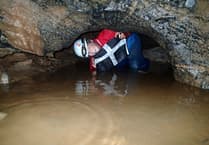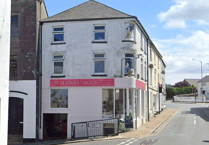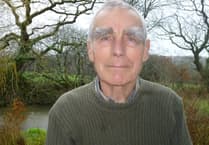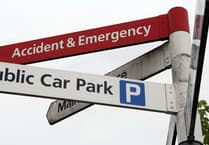Among the many riches that make up the Cornwall we know and love is the weird and wonderful place names.
Whether it’s Angarrack, Feock, Halliggye Fogou, Nancekuke, Ponsanooth, Zennor or many others, it’s safe to say odd place names are in a vast variety.
But what’s behind a name? Ahead of this years’ St Piran’s Day, a new book has been launched to take readers through a A to Z journey of Cornish places and their richly resonant names in the form of poetry and photography.
It is the work of the National Writers Association 26, who invited 26 writers to visit 26 places around Cornwall. Some of the places were well-known while others were in the middle of nowhere.
Each writer was asked to create a ‘sestude’ – a poem of precisely 62 words to describe the place they were sent to visit, before those words were sent to a photographer to interpret the words into a piece in the places the writers visited.
The finished pieces have formed an exhibition which is taking place at The Poly in Falmouth from Tuesday, February 28 until Saturday, March 4, with the accompanying book being launched at the same time, which will feature an introduction by Cornish language expert Kensa Broadhurst as well as longer explorations of the places and names in addition to the poems and photography.
One writer, the celebrated Cornwall-based poet, Penelope Shuttle was assigned to Feock and was so inspired she returned with 26 sestudes responding to the place and the shadowy saint from which it takes its name; with five included in the book.
Julia Webb-Harvey, a Falmouth-based writer and co-organiser of the project, said: “Like many people who live in Cornwall or come here as visitors, I’ve long been fascinated by the rich variety of Cornish place names. There’s so much history and so many fascinating stories behind these, and that’s what we wanted to uncover.
“We’ve included places for every letter of the alphabet and in every part of Cornwall. Finding an X was challenging but it turns out there is one –though it’s not at all easy to get to!”
Tom Scott, a writer and Falmouth University lecturer who helped organise the project, said: “I was assigned to Nancekuke, near Portreath, which has not only a fascinating history but also a mysteriously ambiguous name. The Cornish language has changed over time, and possible derivations could mean ‘blind valley’, ‘empty cemetery’, or possibly even ‘cuckoo valley’.
“At one time it was home to the UK’s largest chemical weapons factory, but before that it was a popular spot for picnickers from nearby Redruth, and famous for its splendid turnips. It was a stunningly beautiful spot to visit, but it also felt haunted by many ghosts from the past.




